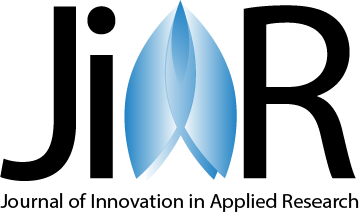
Genome-Wide Association Studies: An Outlook
3
Views
32
Downloads
Genome-wide association studies (GWAS), which have been used in human disease research for the past ten years, are now the de facto method for finding new genes. While there is an ongoing discussion about how to make the most of these studies and occasionally about how much value they actually add, it is evident that many of the most compelling findings have come from large-scale mega-consortia and/or meta-analyses that pool information from several studies and tens of thousands of participants. Even though these studies are growing more
and more prevalent, statistical techniques have lagged behind. There are effective meta-analysis techniques available, but even when they are used carefully and to their full potential, some statistical problems persist. The GWAS meta-analysis literature is comprehensively reviewed in this article, with a focus on methodology, software choices, and methodologies that have been applied in actual investigations. Using a case study, we highlight how various approaches differ from one another. We also talk about some of the open questions and possible directions in the future.
<?xml version="1.0" encoding="UTF-8" standalone="yes"?>
<!DOCTYPE article PUBLIC "-//NLM//DTD JATS (Z39.96) Journal Publishing DTD v1.2d1 20170631//EN" "JATS-journalpublishing1.dtd">
<article xlink="http://www.w3.org/1999/xlink" dtd-version="1.0" article-type="computational-biology" lang="en">
<front>
<journal-meta>
<journal-id journal-id-type="publisher">JIAR</journal-id>
<journal-id journal-id-type="nlm-ta">Journ of innovation in applied research</journal-id>
<journal-title-group>
<journal-title>Journal of Innovation in Applied Research</journal-title>
<abbrev-journal-title abbrev-type="pubmed">Journ of innovation in applied research</abbrev-journal-title>
</journal-title-group>
<issn pub-type="ppub">2231-2196</issn>
<issn pub-type="opub">0975-5241</issn>
<publisher>
<publisher-name>Radiance Research Academy</publisher-name>
</publisher>
</journal-meta>
<article-meta>
<article-id pub-id-type="publisher-id">120</article-id>
<article-id pub-id-type="doi">10.51323/JIAR.2023/6/1/56-62</article-id>
<article-id pub-id-type="doi-url">https://doi.org/10.51323/JIAR.2023/6/1/56-62</article-id>
<article-categories>
<subj-group subj-group-type="heading">
<subject>Computational Biology</subject>
</subj-group>
</article-categories>
<title-group>
<article-title>Genome-Wide Association Studies: An Outlook
</article-title>
</title-group>
<contrib-group>
<contrib contrib-type="author">
<name>
<surname>Verma</surname>
<given-names>Apoorva</given-names>
</name>
</contrib>
<contrib contrib-type="author">
<name>
<surname>Kumar</surname>
<given-names>Raj</given-names>
</name>
</contrib>
<contrib contrib-type="author">
<name>
<surname>Shukla</surname>
<given-names>Shubhang</given-names>
</name>
</contrib>
<contrib contrib-type="author">
<name>
<surname>Singh</surname>
<given-names>Swarnima</given-names>
</name>
</contrib>
<contrib contrib-type="author">
<name>
<surname>Rajput</surname>
<given-names>Parul Johri and Manish Singh</given-names>
</name>
</contrib>
</contrib-group>
<pub-date pub-type="ppub">
<day>1</day>
<month>01</month>
<year>1970</year>
</pub-date>
<volume>6</volume>
<issue/>
<fpage>56</fpage>
<lpage>62</lpage>
<permissions>
<license license-type="open-access" href="http://creativecommons.org/licenses/by/4.0/">
<license-p>This is an open-access article distributed under the terms of the Creative Commons Attribution (CC BY 4.0) Licence. You may share and adapt the material, but must give appropriate credit to the source, provide a link to the licence, and indicate if changes were made.</license-p>
</license>
</permissions>
<abstract>
<p>Genome-wide association studies (GWAS), which have been used in human disease research for the past ten years, are now the de facto method for finding new genes. While there is an ongoing discussion about how to make the most of these studies and occasionally about how much value they actually add, it is evident that many of the most compelling findings have come from large-scale mega-consortia and/or meta-analyses that pool information from several studies and tens of thousands of participants. Even though these studies are growing more
and more prevalent, statistical techniques have lagged behind. There are effective meta-analysis techniques available, but even when they are used carefully and to their full potential, some statistical problems persist. The GWAS meta-analysis literature is comprehensively reviewed in this article, with a focus on methodology, software choices, and methodologies that have been applied in actual investigations. Using a case study, we highlight how various approaches differ from one another. We also talk about some of the open questions and possible directions in the future.
</p>
</abstract>
<kwd-group>
<kwd>Genome</kwd>
<kwd> NGS</kwd>
</kwd-group>
</article-meta>
</front>
</article>